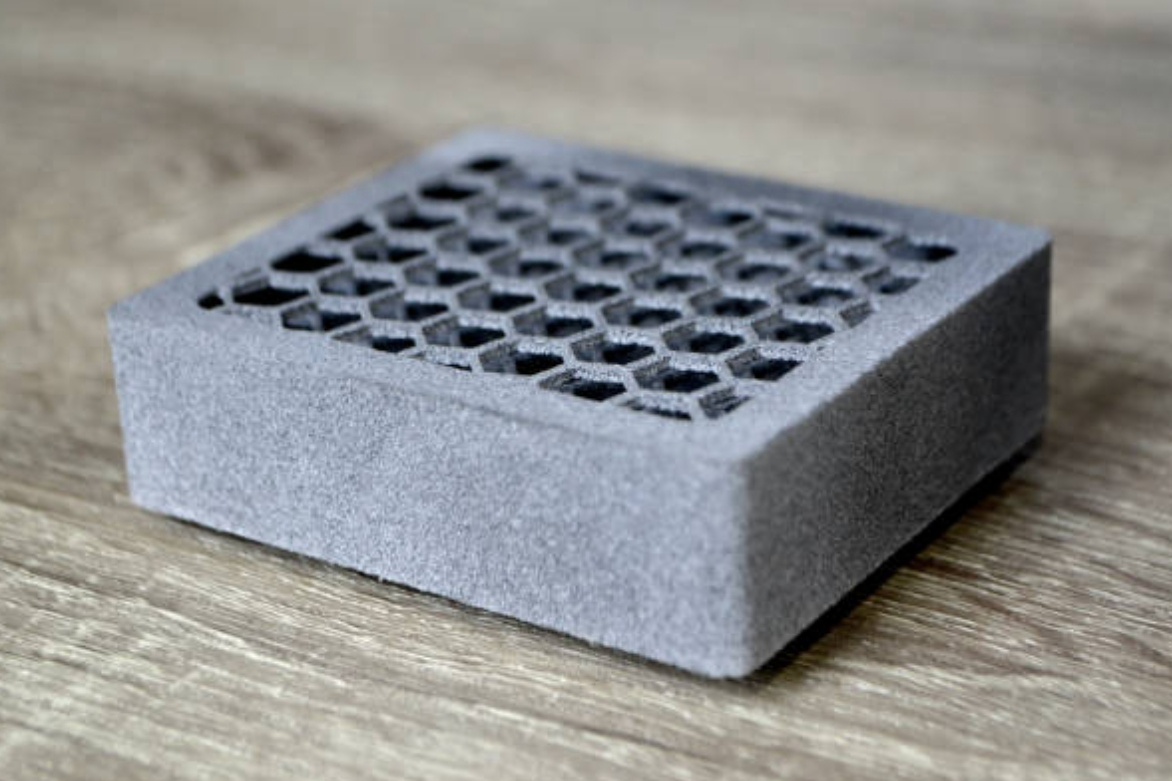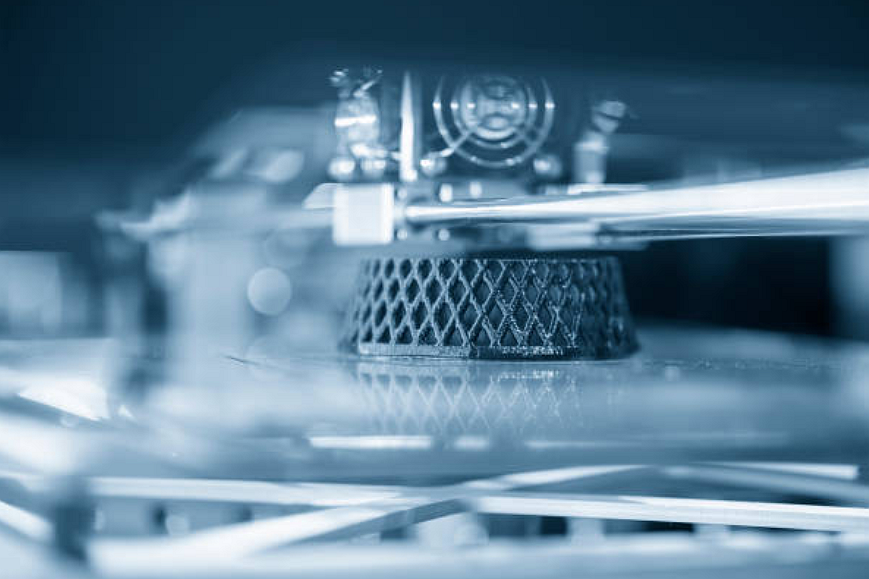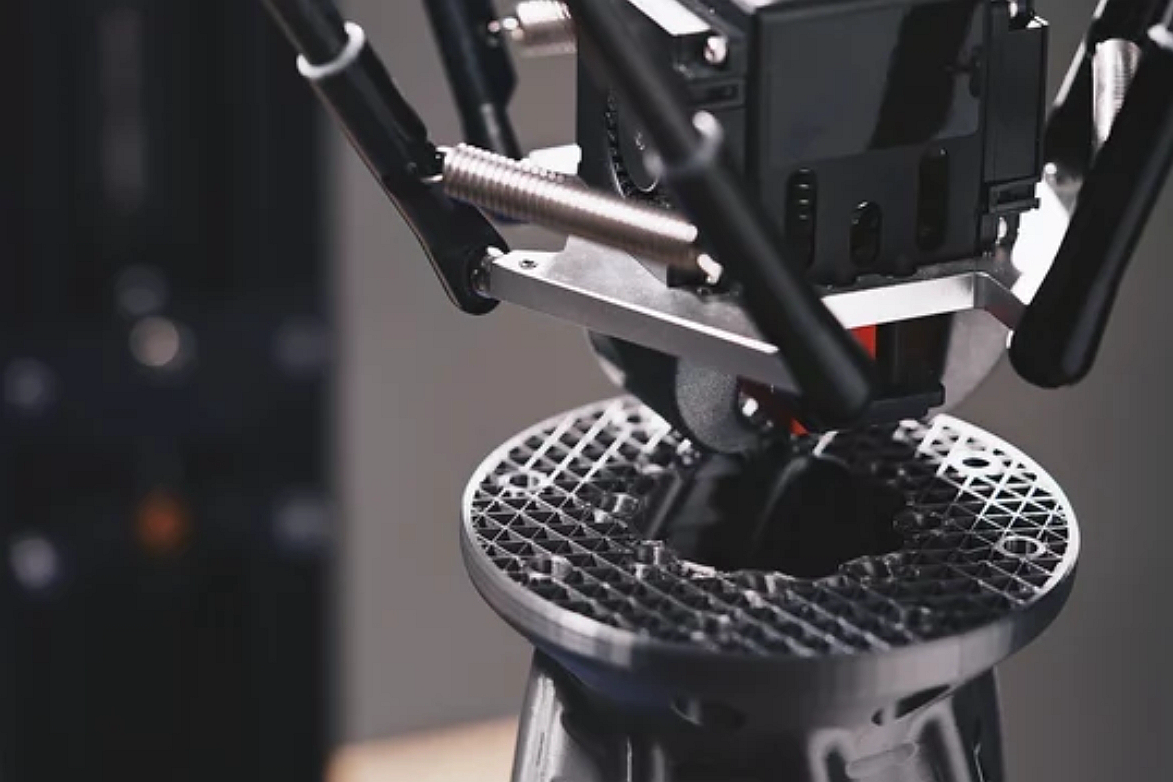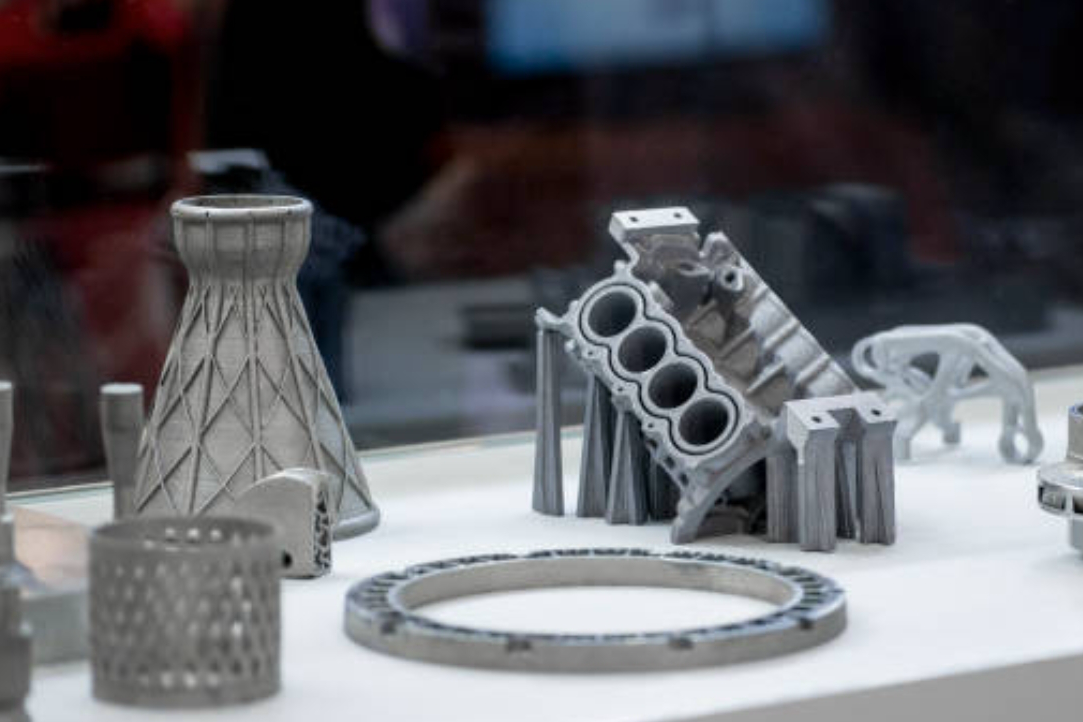Mastering Rapid Prototyping: An Insider’s Guide to Multi Jet Fusion (MJF) 3D Printing
In the swiftly evolving landscape of product development and manufacturing, the ability to rapidly prototype functional parts is not just an advantage—it's a necessity. Among the myriad of 3D printing technologies fueling this revolution, Multi Jet Fusion (MJF) emerges as a beacon of innovation. Developed by HP, MJF represents a leap forward in the additive manufacturing domain, offering unprecedented speed, efficiency, and detail in creating functional prototypes.
Multi Jet Fusion technology leverages a unique layering process that combines an inkjet array system with thermal energy, allowing for the production of parts that are not only precise but also mechanically robust. This capability significantly departs from traditional prototyping methods, often involving lengthy timelines and higher costs. With MJF, designers and engineers can iterate designs rapidly, test functionalities earlier in the product development cycle, and expedite the time to market for innovations.
Unpacking Multi Jet Fusion (MJF) Technology
In the diverse world of additive manufacturing, Multi Jet Fusion (MJF) technology has carved out a distinctive niche, revolutionizing how functional prototypes are conceived, designed, and realized. Developed by HP, MJF distinguishes itself through its innovative approach to 3D printing, which merges the precision of inkjet printing with the durability of thermal sintering processes. Here, we delve into the fundamentals of MJF, offering insight into its development, key components, and the overarching process that defines this advanced manufacturing technique.
Definition and Development
Multi Jet Fusion is an advanced 3D printing technology that utilizes a fine-grained powder, typically nylon, as its base material. The process begins with an inkjet array applying fusing and detailing agents to a thin layer of powder. Thermal energy then activates these agents, causing the powder particles to fuse and form a solid layer. This sequence is repeated until the desired object is fully formed. MJF emerged from HP's extensive research in inkjet technology to bridge the gap between rapid prototyping and full-scale production capabilities.
Critical Components of MJF Technology
Inkjet Array System: At the heart of MJF technology lies the inkjet array, which precisely deposits fusing and detailing agents across the powder bed. This component is crucial for defining the geometry and details of the printed parts.
Detailing Agent: Applied around the edges of the part, the detailing agent controls the spread of the fusing agent, ensuring sharp, high-resolution edges and smooth surfaces.
Fusing Agent: This is selectively applied to areas of the powder bed corresponding to the printed model's cross-sections. It absorbs thermal energy, causing the powdered material to fuse.
Energy Source: Typically infrared, the energy source uniformly distributes heat across the powder bed, activating the fusing agent and facilitating the sintering process without melting the powder entirely.
Overview of the MJF Printing Process
The MJF process can be summarized in a few key steps:
Preparation: The build chamber is filled with a layer of fine powder, preheated to a temperature just below the material's melting point.
Printing: The inkjet array applies the detailing and fusing agents according to the digital model's geometry. An energy source then passes over the powder bed, sintering the powder where the fusing agent is applied.
Layering: After each layer is fused, the build platform lowers, and a new layer of powder is spread on top. The process repeats until the entire part is complete.
Cooling and Extraction: The build chamber can cool before the finished parts are removed from the powder bed. Excess powder is cleaned off the parts and often recycled for future use.
How MJF Works - The Technical Process
Diving into the technicalities of Multi Jet Fusion (MJF) technology offers fascinating insights into why it's become a cornerstone for rapid prototyping, especially for functional parts. This advanced additive manufacturing process merges precision, speed, and versatility, setting it apart from traditional methods and other 3D printing technologies. Here, we break down the MJF process into its core components and steps, highlighting how each contributes to creating high-quality prototypes.
Step-by-Step Breakdown of the MJF Printing Process
Preparation and Digital Modeling
Every MJF project starts with a digital 3D model designed using CAD software. This model is sliced into thin horizontal layers, translating complex designs into a format that the MJF printer can interpret and execute.
Powder Dispersion
The process begins with applying a fine powder layer onto the build platform within the printer's build chamber. The powder material, often Nylon 12 or similar polymers, is spread evenly to ensure uniform layer thickness.
Applying Detailing and Fusing Agents
An inkjet array then deposits fusing and detailing agents onto the powder bed. The fusing agent marks the areas of the powder that need to be sintered to form the part, while the detailing agent is applied around the perimeters to enhance part resolution and surface finish.
Sintering with Thermal Energy
Once the agents are applied, infrared lamps pass over the powder bed, providing the thermal energy needed to activate the fusing agent. It causes the powder particles in the designated areas to fuse, forming a solid layer without melting the powder completely. The detailing agent ensures clean, crisp edges by inhibiting sintering around the part's outlines.
Building the Object Layer by Layer
After each layer is fused, the build platform lowers slightly, and a new layer of powder is applied on top. Applying fusing and detailing agents, followed by sintering with thermal energy, is repeated for each slice of the digital model until the part is entirely constructed.
Cooling and Post-Processing
The entire build chamber can cool down after the printing is complete. The finished parts are extracted from the powder bed, and excess powder is removed. This powder can often be reused for future prints, reducing.
Advantages of MJF for Rapid Prototyping
In the competitive additive manufacturing landscape, Multi Jet Fusion (MJF) technology stands out for its unique advantages, particularly in rapid prototyping. Its ability to produce functional prototypes quickly, with excellent mechanical properties and fine detail, positions MJF as a pivotal technology for the automotive and medical device industries. Here, we delve into the key benefits of using MJF for rapid prototyping, highlighting how it accelerates development cycles and enhances product design.
Speed: Accelerating the Prototyping Process
One of the most compelling advantages of MJF is its speed. Unlike traditional prototyping methods that take weeks or even months, MJF can produce parts in hours or days. This rapid turnaround is crucial for companies looking to iterate designs quickly, conduct functional testing sooner, and shorten the time to market for new products. MJF achieves this efficiency by applying fusing and detailing agents across the entire build area, allowing for the fast production of multiple parts in a single build.
Detail and Precision: High-Quality Prototypes
MJF excels in producing parts with high resolution and precision thanks to its innovative use of detailing agents. This capability is particularly beneficial for prototypes that require fine features, complex geometries, or smooth surface finishes. The technology ensures that even the most intricate designs are accurately realized, providing engineers and designers with a faithful representation of their digital models. This level of detail is invaluable for functional testing, where the prototype's performance must closely match the final product's.
Strength and Durability: Robust Functional Prototypes
Prototypes produced with MJF are not just for show but functional parts that can withstand real-world testing. The thermal fusion process of MJF results in parts with excellent mechanical properties, including strength, durability, and thermal resistance. These characteristics make MJF-printed prototypes suitable for various applications, from aerospace components subjected to high stresses to consumer products that require long-term durability. The ability to test prototypes under actual usage conditions significantly reduces the risk of design failures and enhances product reliability.
Material Options in MJF Printing
MJF technology supports a variety of materials, broadening its application across different industries. Nylon (PA) 12 is the most commonly used material due to its balanced properties of strength, flexibility, and detail. However, the availability of materials like TPU (Thermoplastic Polyurethane) for flexible parts and PA-GF (Glass-Filled Polyamide) for enhanced stiffness and thermal resistance further extends the versatility of MJF in prototyping. This range of material options allows companies to select the most appropriate material based on the specific requirements of their prototype, from aesthetic models to functional, load-bearing components.
Material Options in MJF Printing
Multi-fusion (MJF) technology not only revolutionizes the process of 3D printing but also offers a broad spectrum of material options, enabling the creation of functional prototypes across various industries. The diversity of materials available for MJF printing plays a pivotal role in its capability to produce parts that meet specific application requirements, from mechanical strength and flexibility to thermal resistance. This section explores the materials commonly used in MJF printing, their unique properties, and how they contribute to the versatility of MJF technology.
Overview of Commonly Used MJF Materials
Nylon 12 (PA 12): This is the most widely used material in MJF printing and is known for its optimal balance of strength, durability, and flexibility. Nylon 12 is ideal for various applications, including functional prototypes, end-use parts, and complex assemblies.
Nylon 11 (PA 11): Slightly more flexible than Nylon 12, PA 11 is derived from renewable sources and offers excellent impact resistance and elongation at break. It's particularly suitable for applications requiring flexibility and environmental sustainability.
TPU (Thermoplastic Polyurethane): TPU is a versatile elastomer that combines the flexibility of rubber with the strength and processability of thermoplastics. It's used in MJF printing to create parts that require elasticity, such as flexible hinges, seals, and shock-absorbing components.
PA-GF (Glass-Filled Polyamide): This material is reinforced with glass fibers to enhance its stiffness and thermal resistance. It is suitable for parts subjected to high temperatures or mechanical loads. PA-GF is often used in automotive and aerospace applications for its strength and durability.
Comparison of Material Properties
The choice of material in MJF printing significantly impacts the part's final properties. While Nylon 12 and 11 offer a good mix of strength and flexibility, making them suitable for various applications, TPU stands out for applications requiring elasticity and impact resistance. On the other hand, PA-GF provides an excellent solution for parts that need to withstand rigorous operational conditions, such as high temperatures and mechanical stress.
Material Innovation in MJF
The field of material science plays a crucial role in the evolution of MJF technology. Ongoing research and development efforts are focused on expanding the range of materials compatible with MJF, including introducing conductive materials, flame-retardant polymers, and materials with enhanced color and aesthetic qualities. This innovation in material options is set to broaden the application scope of MJF, enabling the technology to meet more specialized and demanding prototyping and manufacturing needs.
Impact of MJF on Rapid Prototyping and Beyond
Multi-fusion (MJF) technology has significantly influenced the landscape of rapid prototyping, pushing the boundaries of speed, efficiency, and material versatility. Its profound impact extends across various industries, from automotive and aerospace to healthcare and consumer goods, revolutionizing how prototypes are developed and accelerating innovation. This section delves into the transformative effects of MJF on rapid prototyping and its broader implications for manufacturing.
Case Studies: MJF in Action
Automotive Industry: An automotive manufacturer leverages MJF to prototype complex, durable components such as air ducts and engine parts. MJF reduces the prototyping phase from weeks to days, enabling faster iteration and testing, significantly shortening new vehicle development cycles.
Aerospace Sector: In aerospace, where part weight and strength are critical, MJF creates lightweight, structurally sound components. By prototyping with materials like PA-GF, companies can test parts under real-world conditions much earlier in the design process, ensuring optimal performance and safety.
Medical Devices: MJF's ability to produce biocompatible prototypes rapidly has transformed the development of custom surgical tools and patient-specific implants. It has enabled medical professionals to offer personalized treatments, improving patient outcomes.
Consumer Goods: The fashion and sports industries are utilizing MJF to rapidly prototype personalized products, from wearable technology to customized footwear. MJF's speed and material flexibility allow brands to quickly move from concept to market, responding agilely to consumer demands.
Reducing Time to Market for New Products
One of the most significant impacts of MJF technology is its ability to drastically reduce the time spent on marketing new products. By enabling rapid prototyping of functional parts that can immediately undergo testing and validation, MJF allows companies to iterate designs quickly, identify and address issues early, and finalize products for production much faster than traditional methods.
Future Outlook: Advancements and Expansion
The potential of MJF has yet to be realized fully. Ongoing advancements in material science, machine capabilities, and software integration promise to enhance MJF's precision, efficiency, and range of applications. As the technology matures, it's expected to move beyond prototyping into full-scale production, offering a viable solution for on-demand manufacturing and customized production.
Navigating the Shift to MJF in Manufacturing
Integrating Multi Jet Fusion (MJF) technology into manufacturing processes marks a significant shift in how companies approach prototyping and production. As organizations look to harness the speed, precision, and versatility of MJF, understanding how to transition to this advanced form of additive manufacturing effectively becomes crucial. This section guides businesses contemplating the adoption of MJF, compares it with other 3D printing technologies, and offers tips for optimizing designs for MJF processes.
Considerations for Integrating MJF into Manufacturing Workflows
Assessing Technological Compatibility: Evaluate your current manufacturing and prototyping needs against the capabilities of MJF. Consider factors such as the complexity of parts, material requirements, and production volumes to determine if MJF aligns with your operational goals.
Training and Skill Development: Implementing MJF technology may require upskilling your team or bringing in specialists. Investing in training ensures that your staff can fully leverage MJF's capabilities, from design optimization to machine operation and maintenance.
Cost-Benefit Analysis: MJF can reduce prototyping times and enable more efficient production, but the initial investment and operational costs must be weighed against the expected benefits. Analyze the potential for cost savings through reduced material waste, lower inventory requirements, and faster time-to-market.
Comparing MJF with Other 3D Printing Technologies
FDM vs. MJF: Fused Deposition Modeling (FDM) is widely used for its simplicity and low cost. However, MJF offers superior part quality, faster production speeds, and excellent material versatility, making it better suited for functional prototyping and end-use applications.
SLA vs. MJF: Stereolithography (SLA) provides excellent surface finishes and detail but lacks the mechanical strength of MJF parts. MJF is preferred for producing durable, functional prototypes and parts that require high precision and strength.
SLS vs. MJF: Selective Laser Sintering (SLS) shares similarities with MJF in terms of part strength and material options. MJF, however, typically offers faster build times and higher throughput, making it a more efficient choice for rapid prototyping and production.
Tips for Optimizing Design for MJF
Design for Additive Manufacturing (DfAM): Embrace DfAM principles to fully exploit the design freedom offered by MJF. Consider complex geometries that would be impossible to create with traditional methods, and utilize the ability to design internal structures and channels to enhance part performance.
Material Selection: Choose the most appropriate MJF material for your application, considering mechanical properties, thermal resistance, and aesthetic requirements. Experiment with different materials to find the optimal balance between performance and cost.
Post-Processing Requirements: MJF parts have excellent surface quality and detail, but some applications may require additional post-processing. Plan for potential finishing steps, such as dyeing, sealing, or smoothing, to achieve the desired final appearance and functionality.
What We Can Do In 3D Printing
The journey through the intricacies of Multi Jet Fusion (MJF) technology uncovers its profound impact on rapid prototyping and hints at its potential to redefine manufacturing paradigms. By offering unparalleled speed, precision, and material versatility, MJF not only streamlines the prototyping process but also paves the way for on-demand production, customized solutions, and innovative product designs that were previously unattainable.
The advantages of MJF, from accelerating product development cycles to enabling the creation of complex, functional prototypes, underscore its role as a catalyst for innovation across industries. Whether it's automotive, aerospace, medical, or consumer goods, MJF technology provides companies with the tools to iterate faster, test more thoroughly, and bring products to market more efficiently.
As we look to the future, the continued evolution of MJF technology—through advancements in materials, machine capabilities, and software integration—promises to expand its application scope even further. The potential for MJF to move beyond prototyping into full-scale production heralds a new manufacturing era characterized by greater flexibility, sustainability, and customization.
Selective Laser Melting (SLM) Service: Rapid prototyping and production of nickel, cobalt, and stainless steel superalloys.
Fused Deposition Modeling (FDM) Service: Prototypes and Functional Parts, Jigs and Fixtures, Low-Cost Models.
Stereolithography (SLA) Service: High-Detail Models, Dental and Medical Applications, Jewelry, and Art.
Selective Laser Sintering (SLS) Service: Complex Geometries, End-Use Parts, Snap-Fit Parts.
Multi Jet Fusion (MJF) Service: Functional Prototypes and End-Use Parts, Complex Assemblies, High-Volume Production.
Direct Metal Laser Sintering (DMLS) Service: Aerospace and Automotive Components, Medical Implants and Tools, Heat Exchangers and Custom Tooling.




